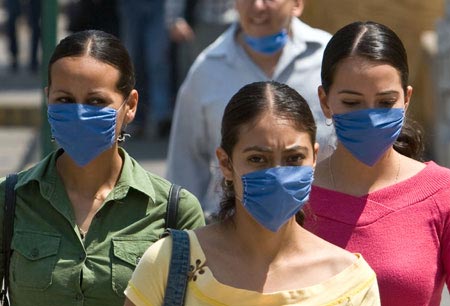Southeast Asia is in danger of becoming a world outbreak
The latest research shows that Southeast Asia is currently one of the fastest growing regions in the world. However, 600 million people in this area are also facing health risks.

The rapid pace of development in Southeast Asia increases the risk of infectious diseases.
(Illustration)
The Lancet , on January 25, said Southeast Asia is a ' hot ' area of infectious diseases. The avian influenza epidemic currently appearing in many Southeast Asian countries may become a pandemic that the center is in this area.
The magazine also said that the change in the composition of Southeast Asia's population is happening at a rapid pace, especially the pace of urbanization. Therefore, although like other areas, there is a transformation from infectious diseases to chronic diseases, however, because the population density in urban areas is too large, these countries are right face the dangers of infectious disease.
The article also stated that Southeast Asia is one of the most prone to natural disasters. Every year, countries in the region suffer dozens of storms and monsoon effects. According to statistics, ¼ of deaths in this area are related to natural disasters and environmental circumstances.
In addition, climatic phenomena such as El Nino also exacerbate the hot and humid climate in the region, leading to droughts, tsunamis and infectious diseases such as cholera or malaria. The article says: ' Climate change will increase the spread of infectious diseases, especially diseases that occur when temperatures rise and rainfall increases, such as dengue fever, etc. '
Another problem facing this region is that the economy as well as the health system of 10 Southeast Asian countries have considerable disparities, so controlling the spread of epidemics is very high. many difficulties. For example, an urban country like Singapore, per capita GDP is 37500 USD, while an agricultural country like Laos GDP averages only 890 USD.
At the end of this article, the author also urged people to take timely action, solve the ' non-infectious diseases ' in this area such as cardiovascular disease, smoking, eating habits. Unsafe drinking, lack of sports activities, .
- Floods, droughts will attack Southeast Asia more rapidly
- The strain of avian influenza in Korea differs in Southeast Asia
- Southeast Asia, China has the highest level of pollution in the world
- Japan supports Southeast Asian countries against flood and storm
- Ecosystems of Southeast Asian countries viewed from satellites
- Southeast Asia has a high rate of arsenic poisoning in the country
- Typhoon attacks on Southeast Asia are getting stronger
- Asia is still at risk of catching Ebola
- Southeast Asia is vulnerable to hackers
- Need to quickly kill bird flu in Southeast Asia
- Southeast Asia should learn Chinese technology strategy
- Discovered 160 new species in Southeast Asia
 Green tea cleans teeth better than mouthwash?
Green tea cleans teeth better than mouthwash? Death kiss: This is why you should not let anyone kiss your baby's lips
Death kiss: This is why you should not let anyone kiss your baby's lips What is salmonellosis?
What is salmonellosis? Caution should be exercised when using aloe vera through eating and drinking
Caution should be exercised when using aloe vera through eating and drinking